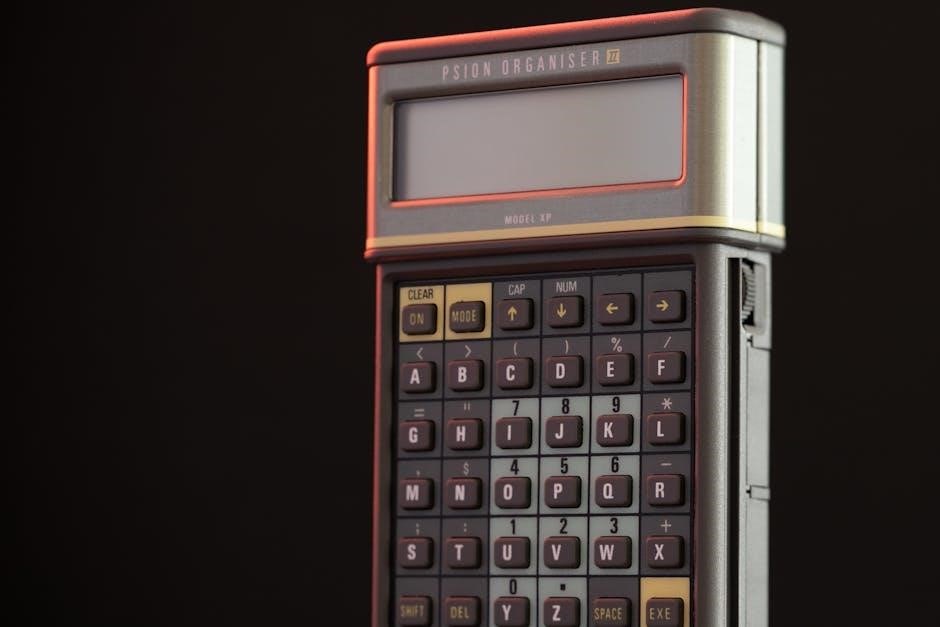
The evolution of calculators traces a fascinating journey from ancient counting tools to modern AI-powered devices, reflecting human ingenuity and technological advancement over centuries.
From the abacus to electronic marvels, calculators have revolutionized mathematics, science, and daily life, adapting to societal needs and driving innovation in education and commerce.
This guide explores the transformative history and future of calculators, highlighting milestones, specialized designs, and their enduring impact on how we interact with numbers and computations.
From Ancient Tools to Modern Marvels
The journey of calculators began with ancient tools like the abacus, a manual counting device, and evolved through mechanical innovations by inventors such as Pascal and Leibniz.
The 17th century saw the emergence of mechanical calculators, which, while bulky, laid the foundation for modern computation. The electronic revolution in the 1960s transformed calculators into compact, powerful devices.
Today, calculators are not just tools for basic arithmetic but advanced instruments integrated with AI, serving specialized fields like science, finance, and education, showcasing human ingenuity and technological progress.

The Dawn of Mechanical Calculators
The dawn of mechanical calculators began with the abacus and evolved in the 17th century through inventors like Pascal and Leibniz, revolutionizing arithmetic for engineers and scientists.
The Abacus and Early Counting Devices
The abacus, one of the earliest counting tools, dates back thousands of years, used across ancient civilizations like Mesopotamia, Egypt, China, and Rome.
It utilized beads or stones to represent numbers, enabling basic arithmetic operations such as addition and subtraction, and was vital for trade and commerce.
The abacus laid the groundwork for mechanical calculators, showcasing human ingenuity in simplifying complex calculations through manual, yet effective, devices.

Pascal’s Pascaline and the First Mechanical Calculator
In 1642, Blaise Pascal invented the Pascaline, a mechanical calculator capable of performing addition and subtraction with ease and accuracy.
It used a system of gears and dials to prevent carry-over errors, marking a significant leap in computational technology.
The Pascaline, though not widely adopted due to its complexity, laid the foundation for modern mechanical calculators and inspired future innovators in the field.

The Electronic Revolution in Calculators
The electronic revolution transformed calculators from bulky, expensive machines into compact, affordable devices, enabling advanced calculations and widespread accessibility for professionals and everyday users alike.
The First Electronic Calculator: A Game-Changer
The first electronic calculator, developed in the 1960s, revolutionized computation by performing complex operations with unprecedented speed and accuracy. It replaced bulky mechanical devices, offering portability and affordability. This innovation transformed industries, enabling engineers, scientists, and businesses to solve problems efficiently. The electronic calculator laid the groundwork for modern handheld and specialized models, democratizing access to advanced mathematical tools and forever changing how society approaches calculations.
Handheld Calculators and the Role of Hewlett-Packard
Hewlett-Packard pioneered the handheld calculator market with the HP 9100A in 1968, followed by the iconic HP-35 in 1972. The HP-35 was the first pocket-sized scientific calculator, empowering professionals with advanced functions like trigonometry and logarithms. Its success set a new standard for portability and functionality, making HP a leader in the industry. These devices not only transformed professional workflows but also paved the way for the widespread adoption of calculators in education and everyday use.

Specialized Calculators for Diverse Needs
Scientific, financial, and gaming calculators cater to specific industries, offering advanced functions like statistical analysis, financial modeling, and niche applications, showcasing versatility in meeting specialized demands.
Scientific Calculators: Beyond Basic Functions
Scientific calculators, introduced by pioneers like Hewlett-Packard with the HP 9100A and HP 35, revolutionized mathematics and science by offering advanced functions such as trigonometry, logarithms, and calculus.
These calculators cater to engineers, students, and researchers, providing tools for statistical analysis, probability calculations, and complex equations, making them indispensable in academic and professional settings.
Over time, scientific calculators have evolved to include programming capabilities and specialized modes, further enhancing their utility in diverse fields, from physics to engineering.
Financial Calculators: Tailored for Commerce
Financial calculators are designed to handle complex monetary calculations, offering specialized functions like amortization schedules, interest rate computations, and investment analysis.
These tools are essential for professionals in finance, enabling precise calculations for loans, mortgages, and portfolio management, thus streamlining decision-making in commerce.
With programmable features, financial calculators adapt to user needs, providing tailored solutions that enhance efficiency and accuracy in financial planning and analysis.
Gaming and Niche Calculators: Unique Applications
Gaming calculators, like the Pokémon Evolution Calculator, help players predict post-evolution stats, aiding strategic decisions in games like Pokémon GO.
Niche calculators also cater to specific needs, such as combat power calculators for Pokémon battles or specialized tools for fantasy sports, enhancing gameplay and player strategy.
These unique applications demonstrate how calculators have evolved beyond traditional math, adapting to diverse interests and hobbies, and providing tailored solutions for enthusiasts worldwide.

Calculators in Education
Calculators became integral to education in the 1980s, sparking debates about their impact on arithmetic skills. Despite concerns, they remain vital tools for complex calculations and real-world preparation.
Integration into Classrooms and Learning Processes
Calculators became a standard classroom tool by the 1990s, transforming how mathematics was taught and learned. Initially met with resistance, educators worried calculators would undermine basic arithmetic skills. However, they soon recognized their value in freeing students from repetitive calculations, allowing focus on conceptual understanding and problem-solving. This shift enabled teachers to introduce more complex, real-world problems, fostering critical thinking. Today, calculators are seamlessly integrated into curricula, enhancing learning efficiency and preparing students for technology-driven environments.
The Debate Over Calculator Use in Schools
The integration of calculators in schools sparked a heated debate among educators. Critics argued that reliance on calculators could erode basic arithmetic skills and hinder students’ ability to identify errors. They feared that without a strong foundation in math fundamentals, students might struggle with conceptual understanding. Conversely, proponents believed calculators allowed students to focus on higher-level thinking, making math education more efficient and relevant to real-world applications. This debate continues to shape policies on calculator use, balancing the benefits of technology with the need for foundational skills.

Comparing Calculators with Computers
Calculators and computers differ significantly in functionality and design. While calculators excel in performing specific mathematical tasks, computers offer versatility through programmability and multitasking capabilities, making them distinct tools in modern society.
Differences in Functionality and Design
Calculators are specialized for mathematical operations, offering simplicity and ease of use, while computers are versatile, capable of multitasking and running various applications.
Design-wise, calculators are compact, focusing on numerical input, whereas computers feature complex architectures for data storage and processing, enabling broader functionalities beyond calculations.
Calculators vs. Computers: Use Cases and Limitations
Calculators excel in environments requiring quick, straightforward calculations, such as education, finance, and everyday tasks, offering portability and simplicity.
Computers, however, dominate in complex tasks like programming, data analysis, and multitasking, where their versatility and processing power are essential.
Modern Innovations in Calculator Technology
Modern calculators feature AI integration, voice commands, and cloud connectivity, enabling advanced calculations and seamless data sharing across devices, while touchscreens and high-resolution displays enhance user experience.
AI-Powered Calculators and Advanced Features
AI-powered calculators represent the pinnacle of modern innovation, offering advanced problem-solving capabilities and real-time data analysis. These devices can interpret complex mathematical expressions, provide step-by-step solutions, and even offer insights into optimization and graphing. With natural language processing, users can input problems verbally or through text, making calculations more intuitive. Additionally, AI-driven calculators adapt to user behavior, learning preferences and frequently used functions to enhance efficiency. Cloud connectivity further allows for seamless collaboration and data synchronization, ensuring accessibility across multiple platforms. This integration of artificial intelligence not only simplifies calculations but also elevates the educational experience, making advanced mathematics more approachable for students and professionals alike.
The Role of Calculators in the Digital Age
In the digital age, calculators have transitioned from standalone devices to integrated tools within smartphones, tablets, and computers, ensuring constant accessibility. Despite the rise of computers, calculators remain essential for their simplicity and specialized functions, offering immediate results for both basic and complex calculations. They are indispensable in fields like education, finance, and engineering, where precision and speed are critical. Moreover, their inclusion in digital platforms has enhanced their utility, making them a cornerstone of modern productivity and learning. Their evolution underscores their enduring relevance in an increasingly connected world.

Future Trends in Calculator Development
Future calculators will integrate AI, offering predictive calculations and enhanced problem-solving. Eco-friendly designs and accessibility features, like voice commands, will dominate, ensuring usability for all users globally.
Integration with Emerging Technologies
Calculators are increasingly integrating with emerging technologies like AI and the Internet of Things (IoT). AI-powered calculators now offer predictive calculations and real-time data analysis, enhancing problem-solving capabilities. Cloud connectivity enables seamless data sharing and collaboration across devices. Voice-activated interfaces and augmented reality displays are becoming standard, providing immersive user experiences. Additionally, blockchain technology is being explored to enhance security in financial calculations. These advancements ensure calculators remain indispensable tools in the digital age, adapting to meet the demands of a rapidly evolving world.
Sustainability and Accessibility in Future Designs

Future calculators are expected to prioritize sustainability and accessibility, incorporating eco-friendly materials and energy-efficient designs. Solar-powered and battery-free models are gaining traction, reducing environmental impact. Accessibility features, such as voice commands, tactile interfaces, and multilingual support, aim to make calculators usable for everyone, including those with disabilities. Inclusive design principles are being integrated to ensure affordability and usability across diverse populations. These advancements highlight a commitment to creating tools that are both environmentally responsible and universally accessible, fostering inclusivity in education and professional settings.
The evolution of calculators reflects a remarkable journey from ancient tools to AI-driven devices, revolutionizing mathematics and society. This guide highlights their transformative impact and future possibilities.

Reflecting on the Journey and Looking Ahead
The journey of calculators, from ancient tools like the abacus to AI-powered devices, showcases human ingenuity and technological progress. Over centuries, calculators have evolved to meet diverse needs, transforming education, commerce, and science. Today, they are more accessible, affordable, and powerful than ever, with specialized functions for finance, science, and even gaming. As technology advances, future calculators may integrate emerging innovations like quantum computing and sustainability, ensuring their relevance in an ever-changing world. The next chapter in this story promises exciting possibilities, blending tradition with cutting-edge innovation.